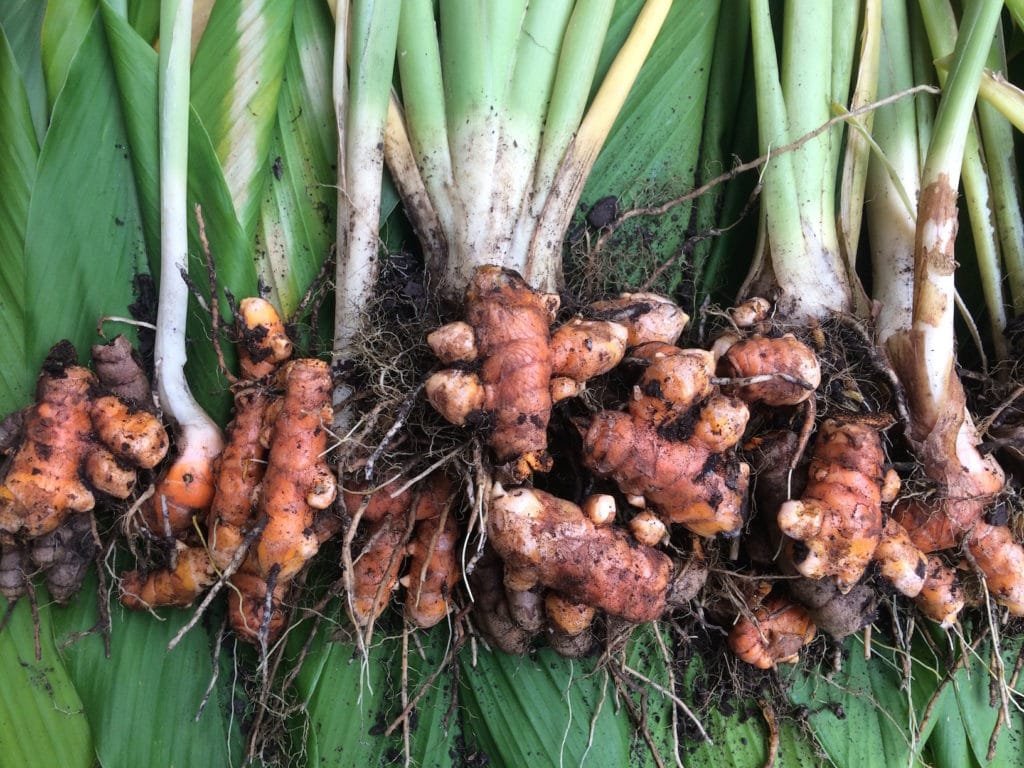How to grow turmeric
Despite the lucrative returns of over Ksh500,0000 from half-anacre, turmeric is not as widely grown by Kenyan farmers as other high-value crops in the medicinal and aromatic plants family
1) Climate
The crop thrives in a tropical climate with a heavy rain period, which is followed by a hot dry spell. It requires 1,000mm-2,000mm of rainfall annually and an altitude of 1,500 metres above sea level, making it ideal for many regions in Kenya and East Africa.
Ideal temperatures are between 20°C-35°C. It does well in organically rich, well-drained loamy soils with a pH of 4.5-7.5. Farmers whose soils have a high pH can lower it by applying compost manure, while low pH can be corrected by applying calcium carbonate.
2) Selecting planting materials
A farmer can go wrong by picking the wrong planting materials. “Avoid buying fresh turmeric rhizome splits from the market. This can result in longer waiting periods before sprouting, since dormancy period of the seed materials is three months,” he advises. Procure planting materials from certified seed nurseries or government merchants such as Kalro.
3) Land preparation
Requires about 16 tonnes of farmyard or compost manure per acre, which should be broadcasted and mixed 35cm-40cm depth during ploughing. This is followed by harrowing three days after ploughing.
4) Planting
Prepare beds one to 1.5 metres wide, 15cm high and 50cm between beds, just before planting. Make ridges and furrows of 45cm to 50cm on the beds. When planting, seed rate depends on factors such as soil type, planting system and weight of rhizomes and variety.
Plant sets on ridges of 25-30cm apart, 15-30cm within rows and at a depth of 5-10 cm. About 1,000kg mother or finger rhizomes are required for each acre. Cut seed material from mother or finger rhizomes into pieces of four to five centimetres long with one or two buds.
Mother rhizomes give over 50 per cent higher yields than finger rhizomes since it has a wider diameter than finger rhizomes. Generally, a good rhizome for planting should weigh 30- 40g and have larger diameter. With sufficient water, the shoot should sprout within 10-15 days and will continue over a period of four to eight weeks before transplanting. When intercropping, one requires 400kg to 500kg of rhizomes. It can be done with chili, onions, French beans, coconut, eggplant and maize.
5) Mulch
Immediately after planting and about 90 days later to control weeds, prevent moisture loss and soil erosion.
6) Irrigation
A plant will require a litre of water every two days during the dry season and half-a-litre if vertical farming is done. Water before and after planting, then irrigate at intervals of seven to 10 days.
7) Manure and fertiliser application
Apply 16 tonnes of well-decomposed farmyard manure during land preparation. For fertiliser, apply NPK at a ratio of 60:25:25 kilos per acre Top-dress a month later with UREA at 25kg/ acre. Weeding should be done when needed. However, four to five weeding sessions are recommended.
8) Pests and diseases
Turmeric is affected by pests such as thrips, rhizome scales, nematode pests, and shoot. Borers and diseases such as leaf blotch, leaf spot, leaf blight, root not and rhizome rot. Root knot nematodes can wipe out the entire crop population if not prevented or controlled in time,” reveals Ndegwa. Seek professional assistance on seeing any sign of disease or pests.
9) Harvest and post-harvest handling
Happens in seven to eight months for early maturing, and eight to nine months for medium maturing varieties. Harvest when leaves begin turning yellow and drying up. Cut leaves close to the ground and gather the rhizomes by hand or use a spade to carefully lift clumps to avoid damaging the rhizomes. Rhizomes are cured by leaving them for a day to wilt. Ensure this is done within two to three days of harvesting. Just before curing, separate the mother from the finger rhizomes and clean them up. Remember, you can realise an average yield of 10 to 15 tonnes per acre of green turmeric.
9) Post-harvest preservation
This involves boiling in a covered pot filled with three-quarters of water for 45 to 60 minutes, drying, and then polishing of the rhizomes by manual or mechanical rubbing to make them smooth and appealing. Remember to leave your boiled rhizomes indoors for about a day before sun drying for 10 to 15 days. You can preserve some rhizomes for seeds for at least 15 days by storing them in pits and covering with sawdust or sand.
Agronomical support
“We have recruited an agronomist who specializes in organic farming to guide our farmers. Farmers can also send their queries via phone and receive help,” says Mr Wango.
Marketing
After polishing, your turmeric is ready for the market. A finger of a rhizome of about 11cm retails at Ksh20 in Nairobi and the price is higher in the international markets.
Other available varieties include Swarna, Sudarshana, Suguna, BSR 1, Krishna, Rajendra Sonia, BSR 2, Allepy finger turmeric, Ranga and Waigaon.
Investment and production
Though the costs of raising an acre can be regarded as quiet high. At between Ksh350,000 to Ksh400,000 for seeds, water, manure, and labour, a kilo fetches Ksh200 to Ksh400, depending on variety and demand.
An acre can yield up to 15,000 kilos of wet turmeric rhizomes. 10,000 kilos when dry, which translates into Ksh2,000,000 to Kshs4,000,000 when sold dry. And Ksh3,000,000 to Ksh6,000,000 when wet, says Mr Ndegwa. If divided by nine months maturity waiting period, it means that a farmer will be earning about Ksh300,000 – Ksh600,000 a month from each acre of turmeric.
AlSO READ ABOUT: feeding-milking-your-dairy-cow




Comments are closed.